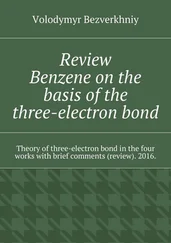Currently, both NATO and the Warsaw Pact are intensely active in fundamental research and investing heavily in it. One or more technological leaps can occur at any time. Such an occurrence will pose a major threat to our strategic planning.
This article argues that our focus is currently on the gradualistic mode of technology development and insufficient attention is paid to the possibility of technology leaps. Starting from a higher vantage point, we should develop a comprehensive strategy and set of principles so that we can respond appropriately when technological leaps occur.
Fields where technological leaps are most likely:
Physics: [ omitted]
Biology: [ omitted]
Computer Science: [ omitted]
The Search for Extraterrestrial Intelligence (SETI): Of all fields, this is the one in which the possibility for a technology leap is greatest. If a leap occurs in this field, the impact will exceed the sum of technology leaps in the other three fields.
[ Full Text][omitted]
[ Instructions from Central Leadership] Distribute this article to appropriate personnel and organize discussion groups. The article’s views will not be to the liking of some, but let’s not rush to label the author. The key is to appreciate the author’s long-term thinking. Some comrades cannot see beyond the ends of their noses, possibly because of the greater political environment, possibly because of their arrogance. This is not good. Strategic blind spots are extremely dangerous.
In my view, of the four fields where technology leaps may occur, we have given the least thought to the last one. It’s worth some attention, and we should systematically analyze the matter in depth.
Signed: XXX Date: XX/XX/196X
II.
Research Report on the Possibility of Technology Leap Due to the Search for Extraterrestrial Intelligence
1. Current International Research Trends [ Summary]
(1) The United States and other NATO states: The scientific case and the necessity for SETI are generally accepted, and strong academic support exists.
Project Ozma: In 1960, the National Radio Astronomy Observatory at Green Bank, West Virginia, searched for extraterrestrial intelligence with a radio telescope 26 meters in diameter. The project examined the stars Tau Ceti and Epsilon Eridani for 200 hours using ranges near the 1.420 gigahertz frequency. Project Ozma II, which will involve more targets and a broader frequency range, is planned for 1972.
Probes: The Pioneer 10 and Pioneer 11 probes, each of which will carry a metal plaque containing information about civilization on Earth, are scheduled for launch in 1972. The Voyager 1 and Voyager 2 probes, each of which will carry a metal audio record, are scheduled for launch in 1977.
The Arecibo Observatory in Puerto Rico: Constructed in 1963, this is an important instrument for SETI. Its effective energy collection area is about 20 acres, which is greater than the sum of the collecting areas of all other radio telescopes in the world. When combined with its computer system, it can simultaneously monitor 65,000 channels and is also capable of ultrahigh-energy transmissions.
(2) The Soviet Union: Few sources of intelligence are available, but there are indications that large investments have been made in the field. Compared to NATO countries, the research seems to be more systematic and long term. Based on certain isolated information channels, plans are currently under way to build a global-scale very-long-baseline interferometry (VLBI) aperture-synthesis radio telescope system. Once the system is completed, it will possess the world’s most powerful deep-space exploration capabilities.
2. Preliminary Analysis of Social Patterns of Extraterrestrial Civilizations Using a Materialist Conception of History [ omitted]
3. Preliminary Analysis of the Influence of Extraterrestrial Civilizations on Human Social and Political Trends [ omitted]
4. Preliminary Analysis of the Influence on Current International Patterns Due to Possible Contact with Extraterrestrial Civilizations
(1) Unidirectional contact (only receiving messages sent by extraterrestrial intelligence): [ omitted]
(2) Bidirectional contact (exchange of messages with extraterrestrial intelligence and direct contact): [ omitted]
5. The Danger and Consequences of Superpowers Making Initial Contact with Extraterrestrial Intelligence and Monopolizing Such Contact
(1) Analysis of consequences of American Imperialists and NATO making initial contact with extraterrestrial intelligence and monopolizing such contact: [ still classified]
(2) Analysis of consequences of Soviet Revisionists and Warsaw Pact making initial contact with extraterrestrial intelligence and monopolizing such contact: [ still classified]
[ Instructions from Central Leadership] Others have already sent their messages out into space. It’s dangerous if extraterrestrials only hear their voices. We should speak up as well. Only then will they get a complete picture of human society. It’s not possible to get the truth by only listening to one side. We must make this happen, and quickly.
Signed: XXX Date: XX/XX/196X
III.
Research Report on the Initial Phase of the Red Coast Project (XX/XX/196X)
TOP SECRET
Number of Copies: 2
Summary Document: Central Document Number XXXXXX, forwarded to the Commission for Science, Technology, and Industry for National Defense, the Chinese Academy of Sciences, and the Central Planning Commission, Department of National Defense; disseminated at the XXXXXX Conference and the XXXXXX Conference; partially disseminated at the XXXXXX Conference.
Topic Serial Number: 3760
Code Name: “Red Coast”
1. Goal [ Summary]
To search for the possible existence of extraterrestrial intelligence and to attempt contact and exchange.
2. Theoretical Study of the Red Coast Project
(1) Searching and Monitoring
Monitoring frequency range: 1,000 MHz to 40,000 MHz
Monitoring channels: 15,000
Key frequencies to monitor:
Hydrogen atom frequency at 1,420 MHz
Hydroxyl radical radiation frequency at 1,667 MHz
Water molecule radiation frequency at 22,000 MHz
Monitoring target range: a sphere centered around Earth with a radius of 1,000 light-years, containing approximately 20 million stars. For a list of targets, please see Appendix 1.
(2) Message Transmission
Transmission frequencies: 2,800 MHz, 12,000 MHz, 22,000 MHz
Transmission power: 10–25 megawatts
Transmission targets: a sphere centered around Earth with a radius of 200 light-years, containing approximately 100,000 stars. For a list of targets, please see Appendix 2.
(3) Development of the Red Coast Self-Interpreting Code System
Guiding principle: using universal, basic mathematical and physical laws, construct an elemental linguistic code that can be understood by any civilization that has mastered basic algebra, Euclidean geometry, and the laws of classical mechanics (nonrelativistic physics).
Using the elemental code above and supplemented with low-resolution images, gradually build up to a full linguistic system. Languages supported: Chinese and Esperanto.
The entire system’s information content should be 680 KB. Transmission times at the 2,800 MHz, 12,000 MHz, and 22,000 MHz channels are 1,183 minutes, 224 minutes, and 132 minutes respectively.
3. Implementation Plan for the Red Coast Project
(1) Preliminary Design for the Red Coast Monitoring and Searching System [ still classified]
Читать дальше












